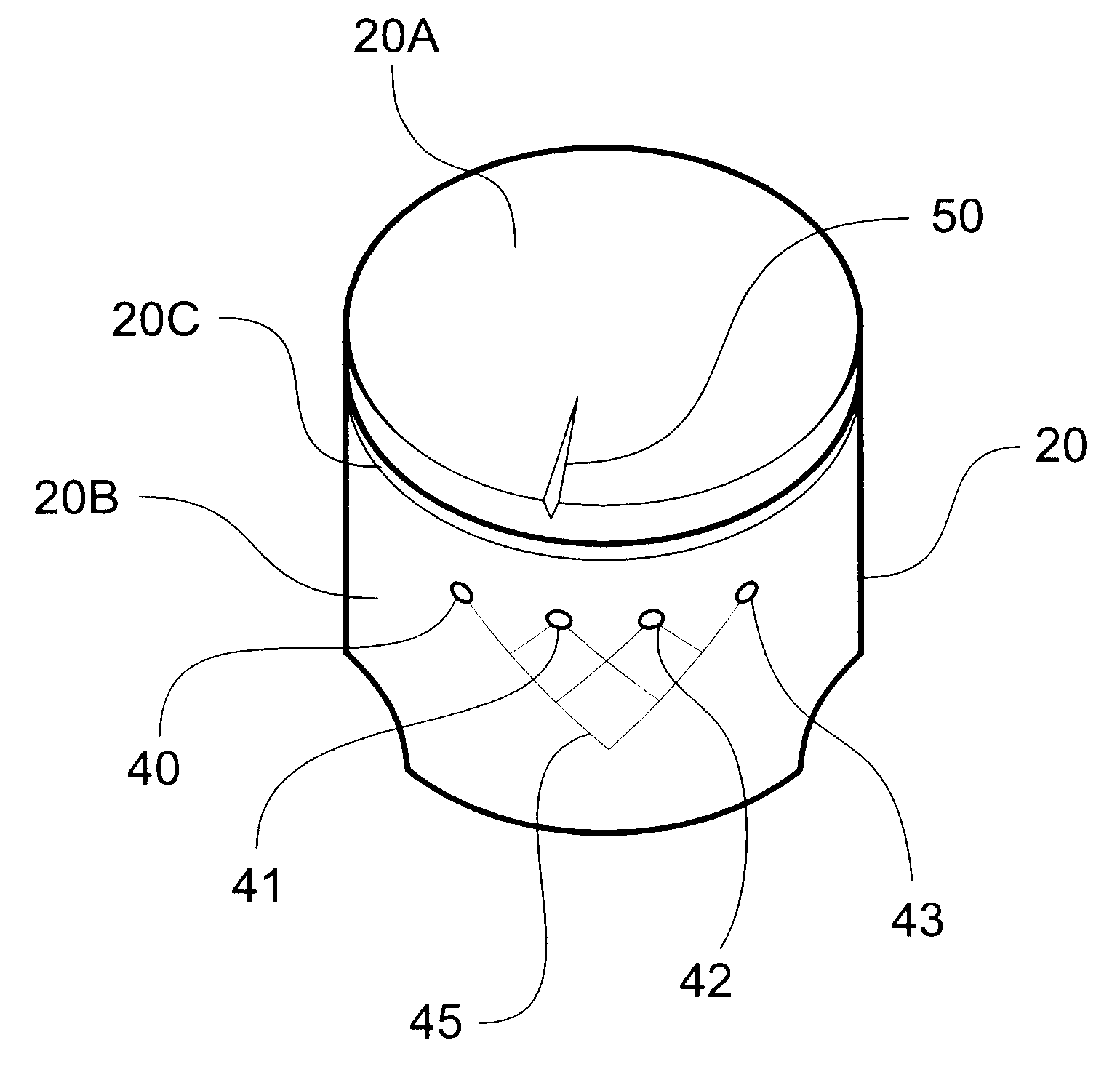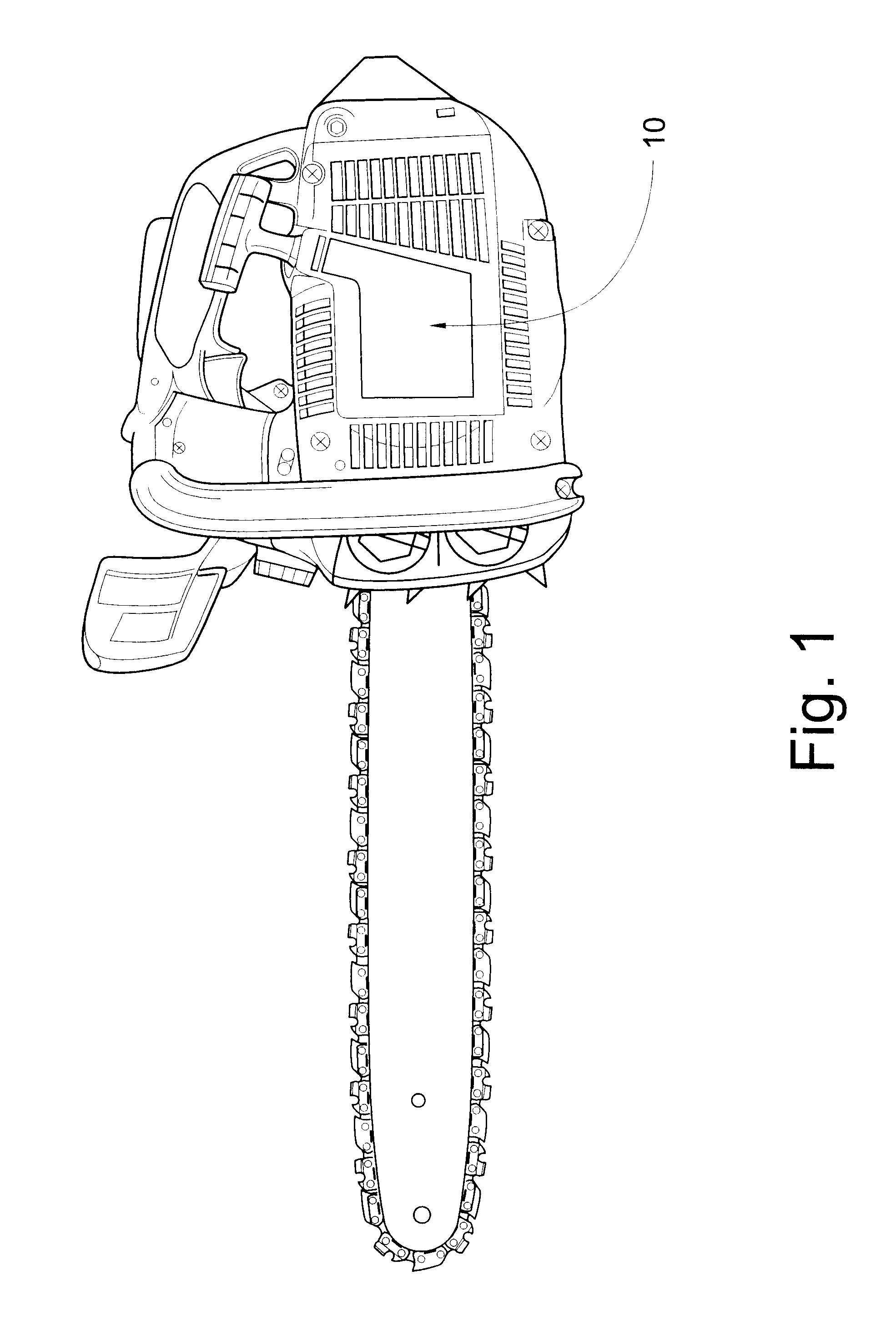Two-cycle internal combustion engine with enhanced lubrication
a technology of internal combustion engine and enhanced lubrication, which is applied in the direction of combustion engine, pressure lubrication, machines/engines, etc., can solve the problems of air pollution, piston and cylinder walls scoring or other damage, and affecting the performance of the engine,
- Summary
- Abstract
- Description
- Claims
- Application Information
AI Technical Summary
Benefits of technology
Problems solved by technology
Method used
Image
Examples
Embodiment Construction
Referring now specifically to the drawings, a two-cycle gasoline internal combustion engine according to the present invention is illustrated in FIG. 1 and indicated generally at reference numeral 10. The engine 10 is shown as used in a typical application to power a chain saw. The principles of the invention have application in many different uses and can be used on two-cycle engines of many different types and sizes.
Relevant parts of the engine 10 are shown in greater detail in FIGS. 2 and 3, and include an engine cylinder block 11, cooling fins 12, a spark plug 13 with an electrical lead 14, and a cylinder gasket 15. A piston 20 is mounted in a conventional manner in the cylinder block 11 for reciprocating movement. Piston 20 defines an annular piston head 20A and an integrally-formed cylindrical skirt 20B. Skirt 20B receives a piston ring 20C which engages the inner cylindrical walls of the cylinder block 11. Piston 20 also includes a piston pin 22 which is mounted in a piston p...
PUM
 Login to View More
Login to View More Abstract
Description
Claims
Application Information
 Login to View More
Login to View More - R&D
- Intellectual Property
- Life Sciences
- Materials
- Tech Scout
- Unparalleled Data Quality
- Higher Quality Content
- 60% Fewer Hallucinations
Browse by: Latest US Patents, China's latest patents, Technical Efficacy Thesaurus, Application Domain, Technology Topic, Popular Technical Reports.
© 2025 PatSnap. All rights reserved.Legal|Privacy policy|Modern Slavery Act Transparency Statement|Sitemap|About US| Contact US: help@patsnap.com



